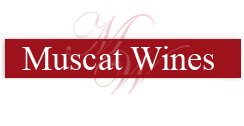Muscat Blends Australia
Liqueur Muscats
Rutherford and Glenrowan in North East Victoria produce some of the best fortified wines in the world: Liqueur Muscat and Liqueur Tokay.
Liqueur Muscat is made from Muscat Blanc a Petits Grains Rouge (a dark-skinned variant of Muscat Blanc a Petits Grains) or Brown Muscat as it is known in Australia. Liqueur Muscats are world famous because of their great age, amazing complexity, and unique style of manufacture.
The grapes are left on the vine in the long and dry autumn until they are semi-dry. As the grapes shrivel in the heat, the sugars and acids concentrate and the grapes can reach 16-20 degrees Baume. The grapes are picked, painstakingly crushed (because they are so dry and sticky), and fermented for a short period of time. Fermentation is stopped by the addition of a high quality grape spirit which kills the yeast and raises the alcohol level to around 18%.
The wine is transferred to old oak casks. New casks are not used because they would impart oak flavours to the wine. The size of the barrels is determined by each winery’s blending program. Placement of the barrels will affect the speed of the wine’s development. Barrels closer to the roof where it is hotter, will mature faster; those on the floor will take longer to mature. It has been estimated that, on average, the casks will lose 5% of their volume each year. (The wine evaporated into the air is called “the Angel’s share”.) Evaporation causes the wine to become noticeably thicker, some 100 year old Muscat becoming as thick as molasses.
The tradition in Rutherglen is to mature the Muscat for a long time in order to harmonize the components of the wine and allow it to develop a rich, smooth, soft flavour. The older the Muscat, the more the flavours concentrate and intensify, the richer the wine will be.
The “finished” wine which is bottled and offered to the public is the result of the artful skills of a master blender. The wine can be matured using a solera system (mixing young wines with older wines of a similar style to maintain consistency), or subjected to the intense heat of the sun to increase the intensity and maturation of the wine. Regardless, the final product will be the result of a blending process that can include blending: parcels of separate wines, young and old wine, dry and sweet wine, solera-blended and barrel-aged wine. The production of Liqueur Muscats, is time-consuming, expensive, intense, highly-skilled and results in the creation of some of the best fortified wines in the world.
In 1995, Rutherford wine producers formed an organization called The Muscat of Rutherglen Network. The organization developed a classification system for Rutherford Muscats based on an ascending order of richness and complexity.
Rutherglen Muscat – is the foundation of the style; displaying the fresh raisin aromas, rich fruit, clean spirit and great length of flavour on the palate which are the mark of all the Muscats of Rutherglen. Average age 2-5 years. Residual sweetness 180-240 grams per litre.
Classic Rutherglen Muscat – displays a greater level of richness and complexity, produced through the blending of selected parcels of wine, often matured in various sizes of oak cask to impart the distinctive dry ‘rancio’ characters produced from maturation in seasoned wood. Average age 5-10 years. Residual sweetness 200-280 grams per litre.
Grand Rutherglen Muscat – takes the flavour of Rutherglen Muscat to a still higher plane of development, displaying a new level of intensity, depth and concentration of flavour, mature rancio characters, and a complexity which imparts layers of texture and flavour. Average age 10-15 years. Residual sweetness 270-400 grams per litre.
Rare Rutherglen Muscat – is rare by name and by nature. These are the pinnacle Rutherglen Muscats – fully developed and displaying the extraordinary qualities that result from the blending of selected parcels of only the very richest, and most complete wines in the cellar. Rare Rutherglen Muscats are only bottled in tiny quantities each year, but for those privileged to taste them, these are wines of breathtaking complexity, texture and depth of flavour. Minimum age 20+ years. Residual sweetness 270-400 grams per litre.
The eight founding members of the Network all produce remarkable Muscat wines. They are: All Saints Estate, Bullers, Campbells, Chambers, Morris, Pfeiffer, Seppelts, Stanton & Killeen.
Australian Blended Wines (Other than Liqueur Muscat)
In addition to the production of Liqueur Muscats, Muscat grapes are used to make crisp, dry white wines, slightly sweeter fruity table wines and rich late harvest dessert wines. Many of these may be blends.
Brown Brothers Wines
Milawa, Victoria, Australia
2009 Orange Muscat and Flora
“Orange Muscat forms the backbone of the blend providing aromas of orange blossom to the nose and a fresh citrus hint to the palate, while the Flora contributes colour, texture and mouth-feel. The current release is vibrant yellow and ahows lifted aromas of citrus blossom , spice and musk. It is fresh and tangy with a zesty long clean balanced finish.” (Brown Brothers website)
Brown Brothers
Moscato Gold 2022
Muscat of Alexandria and Orange Muscat grapes
Sparkling wine
Palate: orange blossom, fresh musk. Finish: silky texture, great balance to natural grape sweetness. Intense in bubbles. (2022 Information from the winery)
Award
2022 Australian Inland Wine Show – Silver Medal
Charles Stuart University Winery
Wagga Wagga NSW 2678 Australia
2009 Alfresco Bianco
“Produced from a blend of white grape varieties. This is a fresh fruity table wine reminiscent of freshly squeezed Muscat grapes, with a rich, sweet palate. This year the alcohol content has been reduced to just 6% – similar to the many moscato style wines from Italy. Serve the wine chilled and enjoy when dining ‘alfresco’ on warm summer days and evenings. The wine is an excellent accompaniment to spicy Asian food or fresh fruit.” (Charles Stuart University website)
